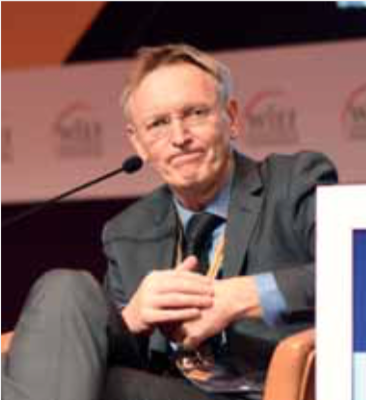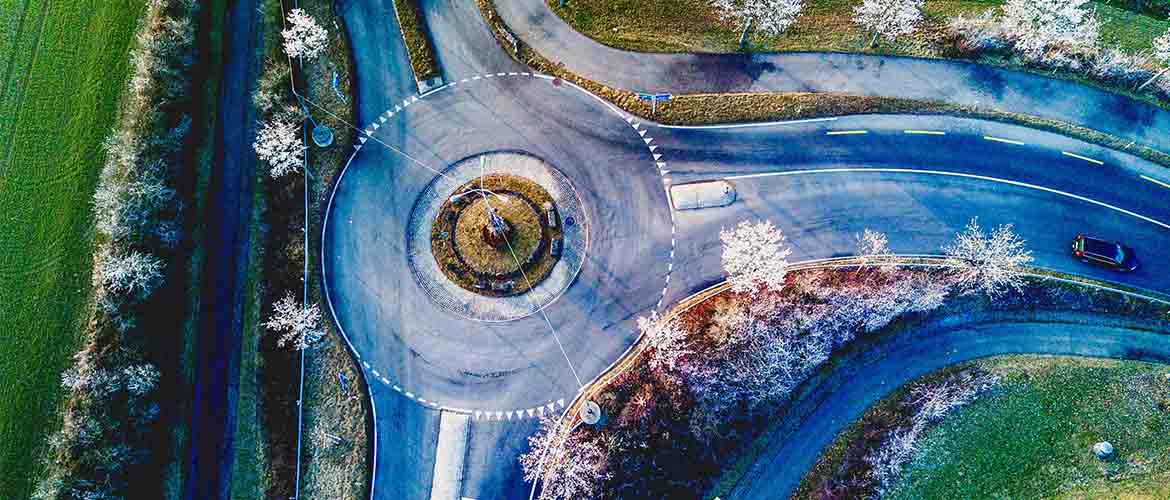Creating a circular economy with zero-waste technologies
The linear economic model is no longer sustainable, and alternatives must be developed. Emulating the circularity of nature and moving towards a circular economy—with its principles of remanufacturing, recycling and zero waste—makes environmental as well as economic sense.
By 2050, the global population will have grown to a staggering 9.7 billion. Alarmingly, 60 per cent of ecosystems today are already degraded or being used unsustainably. The prevailing linear model of production is no longer feasible.
Key features of our world today underscore the urgency of developing alternatives to the status quo.
Alarm bells in Europe
The situation in the European Union, to take one example, is marked by:
1. an unsustainable resource-intensive production model
2. rising resource prices and increased price volatility increased price volatility
3. a changing cost structure in manufacturing with the share of material costs (compared to labour) increasing significantly
4. import dependency
The linear model of production: Extraction – Production – Consumption – Disposal
Given this backdrop, it makes sense to produce renewable products and to do so using less energy and fewer raw materials. Studies and economic modelling have indicated that significant benefits in terms of household income and employment, for example, can be obtained if we were to adopt policies promoting a circular economy.
Why go circular?
A circular economy is about keeping resources as long as possible in the production and consumption cycle. Characterised by practices such as remanufacturing and recycling, a circular economy means a decoupling of growth from resource use (resource decoupling) as well as from environmental impacts (impact decoupling).
The circular economy means decoupling
Impact decoupling is about achieving greater wellbeing and economic growth with less negative environmental impact and possibly even a restoration of ecosystem services. Resource decoupling is achieved when resource productivity improves at a faster rate than economic growth. In short, a circular economy not only results in a significant positive impact on the environment (reduced CO2 emissions and reduced primary material consumption, etc.), it also makes good economic sense.
To get there, we must meet several challenges that include changing human behaviour, addressing the lack of long-term consistency, replacing the prevailing short-term logic with long- term strategic thinking and improving governance and implementation.
Markets play a key role (assuming they are able to ensure efficiency in their allocation of resources) and good regulation is also important. Great potential lies in innovation, product design, consumer behaviour and business models, and while eco-industries are important, ultimately, the entire economy has to change.
How hydrogen is helping
With zero waste being a key aspect of the circular economy, the focus now is to move away from technologies that create ever increasing amounts of waste. Hydrogen may play a significant role in this effort: the most widely used chemical on Earth, hydrogen is employed in fertilisers, food, oil refinery and electronics.
A fairly new but significant development is the use of hydrogen as the fuel in fuel cells. As devices to generate electricity, fuel cells have a much higher efficiency conversion compared to combustion, resulting in significant savings in feedstock. Fuel cells are low-maintenance, robust, have no moving parts, no noise production and zero emissions. They are reliable, scalable and can be standalone.
Challenges include cost and durability but there are numerous examples of fuel cell applications already in the market commercially for portable use (in torches, cameras, etc.), stationary use (notably in combined heat and power (CHP) units) and in the transport sector (vehicles).
In some countries, hydrogen filling stations for the transport sector are becoming increasingly common, but it is in the stationary sector that the use of fuel cells is at its greatest. With domestic CHP units, electric and thermal energy for households are produced in a single efficient process. In Japan, more than 100,000 CHP units are currently being installed.
Asia is by far the leading adopter of fuel cell technology. Globally, various initiatives have been launched but what is still lacking is circular hydrogen production—all the hydrogen currently produced comes from natural gas. There is thus much interest in methods to make circular hydrogen, with the two key processes being electrolysis and biomass conversion.
Where biomass is concerned, there are currently several pilot plans in various countries. Wageningen Food and Biobased Research in the Netherlands focuses on potato steam peels, vegetable residues, verge grass, and kitchen waste, while Universiti Kebangsaan Malaysia (UKM) is looking at the conversion of hydrogen from oil palm residues. Also at UKM, the UKM-Yayasan Sime Darby Chair for Sustainable Development is working on hydrogen as part of an integrated approach to reducing emissions in the palm-oil processing industry.

‘We can definitely learn a lot from nature… because nature is a real circular system… where nothing is lost and everything has its own purpose.’
Dr Janez Potocnik, co-chair of the International Resource Panel (IRP), United Nations Environment Programme (UNEP)
___________________
Mike Wilson
SOURCE: Economic modelling expertise provided by Professor Christoph Böhringer, University of Oldenburg, and Professor Thomas F. Rutherford, University of Wisconsin; Company and expert interviews; Web search; Eurostat household expenditure data; ACEA, The Automobile Industry Pocket Guide, 2015; Todd Alexander Litman, Transportation Cost and Benefit Analysis: Techniques, Estimates and Implications, Victoria Transport Policy Institute, 2009; Udo Jürgen Becker et al., The True Costs of Automobility: External Costs of Cars: Overview on existing estimates in EU-27, TU Dresden, 2012; ICCT, European Vehicle Market Statistics Pocketbook, 2013; ICE database of CO2 embedded in material; Frances Moore and Delavane Diaz, Temperature Impacts on Economic Growth Warrant Stringent Mitigation Policy, Nature Climate Change, 2015; MGI, Overcoming obesity: An initial economic analysis, 2014; FAO, Global food losses and food waste – Extent, Causes and Prevention, 2011; EEA, Towards efficient use of water resources in Europe, 2012; EU Commission, Official journal of the EU, Commission Agriculture and Rural Development, 2012 budget, 2012; FAOSTAT; Kimo van Dijk, Present and future phosphorus use in Europe: food system scenario analyses, Wageningen University, 2014; Josef Schmidhuber, The EU Diet – Evolution, Evaluation and Impacts of the CAP, FAO, 2008; Gregor Zupančič and Viktor Grilc, Anaerobic Treatment and Biogas Production from Organic Waste, 2012; Joint Research Centre (JRC) of the European Commission et al., Precision agriculture: an opportunity for EU farmers – potential support with the CAP 2014-2020, 2014; Laure Itard et al., Building Renovation and Modernisation in Europe: State of the art review, TU Delft, 2008; BPIE, Europe’s buildings under the microscope: A country-by-country review of the energy performance of buildings, 2011; Per-Erik Josephson and Lasse Saukkoriipi, Waste in construction projects: call for a new approach, Chalmers University of Technology, 2007; Mark Hogan, The Real Costs of Building Housing, SPUR, 2014; Cushman & Wakefield Research Publication, Office space across the world, 2013; Ellen MacArthur Foundation, Delivering the circular economy toolkit for policymakers, 2015.





